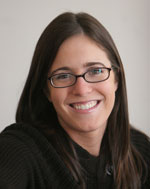Twenty Something / Christina Capecchi
Faith of our fathers: Deep roots and online ancestry
 Recently, while many of my peers tuned into the finale of ABC’s “The Bachelor,” a three-hour event dubbed “historic” by the show’s ratings-minded host, I delved into some real history. I joined more than 2 million people and subscribed to the genealogy website www.Ancestry.com.
Recently, while many of my peers tuned into the finale of ABC’s “The Bachelor,” a three-hour event dubbed “historic” by the show’s ratings-minded host, I delved into some real history. I joined more than 2 million people and subscribed to the genealogy website www.Ancestry.com.
No, I don’t fit the target demographic of silver-haired bird watchers, but somewhere in my 20s, the curiosity sprang up. If the charge of early adulthood is to develop a better understanding of who one is and where one comes from, then exploring my heritage seems a logical pursuit.
I began with the ancestor who has loomed largest—the great grandpa who emigrated from Florence, Italy, to St. Paul, Minn., in 1906, a 17-year-old who didn’t speak English and broke his mother’s heart.
I entered all the information I had, working off research gathered by my dad’s cousin. In less than a second, 47 matches for my great grandpa appeared—census data, his death certificate, a passport application and his World War I draft card.
Suddenly I was studying his pointed cursive and reading his self-assessments—a brown-haired, gray-eyed sculptor with no missing limbs and a dependent wife and child. I could almost see his fingerprints.
After three hours and one call to Mom, I had grafted six generations to my family tree. The work wasn’t loaded with flashy discoveries, but I found a rhythm. And I felt connected, rooted. These were my people. I liked saying their names. On the Italian side, a host of lyrical monikers—Pacifico, Gaspero, Angelo. On the Irish side, sturdy single syllables—Frank, James, George.
The farthest back I traced was my great, great, great grandma Teresa Romagnoli, born in 1841, when Gregory XVI was pope. She married a fellow Florentine, Joseph Capecchi, who died three years later, giving her one child. Teresa outlived Joseph by 44 years.
Their son grew up and fell in love with and married the daughter of a charcoal salesman. They hid a Jewish-Italian family in their attic during World War II, and enjoyed a happier romantic fate, reaching their 70s together and dying three days apart of natural causes.
Another great, great grandfather, meanwhile, five years older, played the fiddle and studied at an Irish seminary, ultimately abandoning his vision of priesthood and setting sail to America.
Their stories amaze me—teenaged brides, parents burying multiple children, cross-Atlantic voyages, ancestors from both sides settling into the same St. Paul ward and attending Mass for the sounds and smells of home.
How improbable it is that we’re here, that each of us was conceived and survived, that all the pilgrims who could have met or missed each other crossed paths exactly as they did.
I love that my heritage and my faith are inextricably linked. For Catholics, family traditions were both religious and cultural—St. Patrick’s Day, St. Lucia’s Day. The same christening gowns and recipes were held dear and passed down. The people at www.Ancestry.com understand this, archiving the funeral Mass cards that served as placeholders in missals and history.
“To be deep in history,” Blessed John Henry Newman once said, “is to cease to be Protestant.” Beyond 1517, when Martin Luther nailed down his 95 Thesis for Christians, it’s all Catholic—incense and sacrament, monks who preserved the Bible, nuns who taught children and ran hospitals, whose faith-filled pupils and patients produced the world’s great cathedrals. Somewhere in their midst—across the alley, around the river—two people met and married, forging the lineage that leads to you.
Our job is to let their stories speak, anchoring us to a deeper faith and buoying us with a greater sense of adventure.
(Christina Capecchi is a freelance writer from Inver Grove Heights, Minn. She can be reached at www.ReadChristina.com.) †
 Recently, while many of my peers tuned into the finale of ABC’s “The Bachelor,” a three-hour event dubbed “historic” by the show’s ratings-minded host, I delved into some real history. I joined more than 2 million people and subscribed to the genealogy website www.Ancestry.com.
Recently, while many of my peers tuned into the finale of ABC’s “The Bachelor,” a three-hour event dubbed “historic” by the show’s ratings-minded host, I delved into some real history. I joined more than 2 million people and subscribed to the genealogy website www.Ancestry.com.